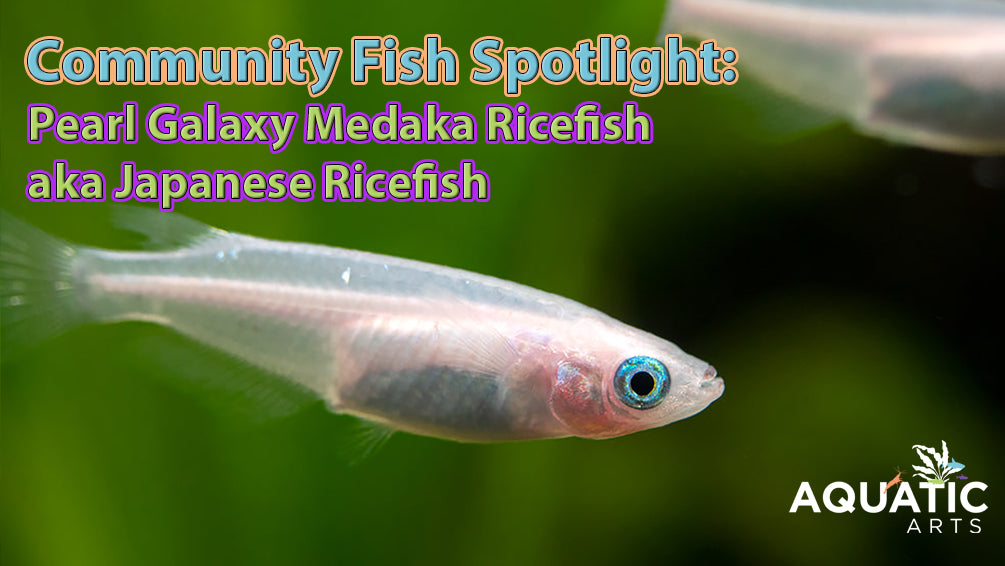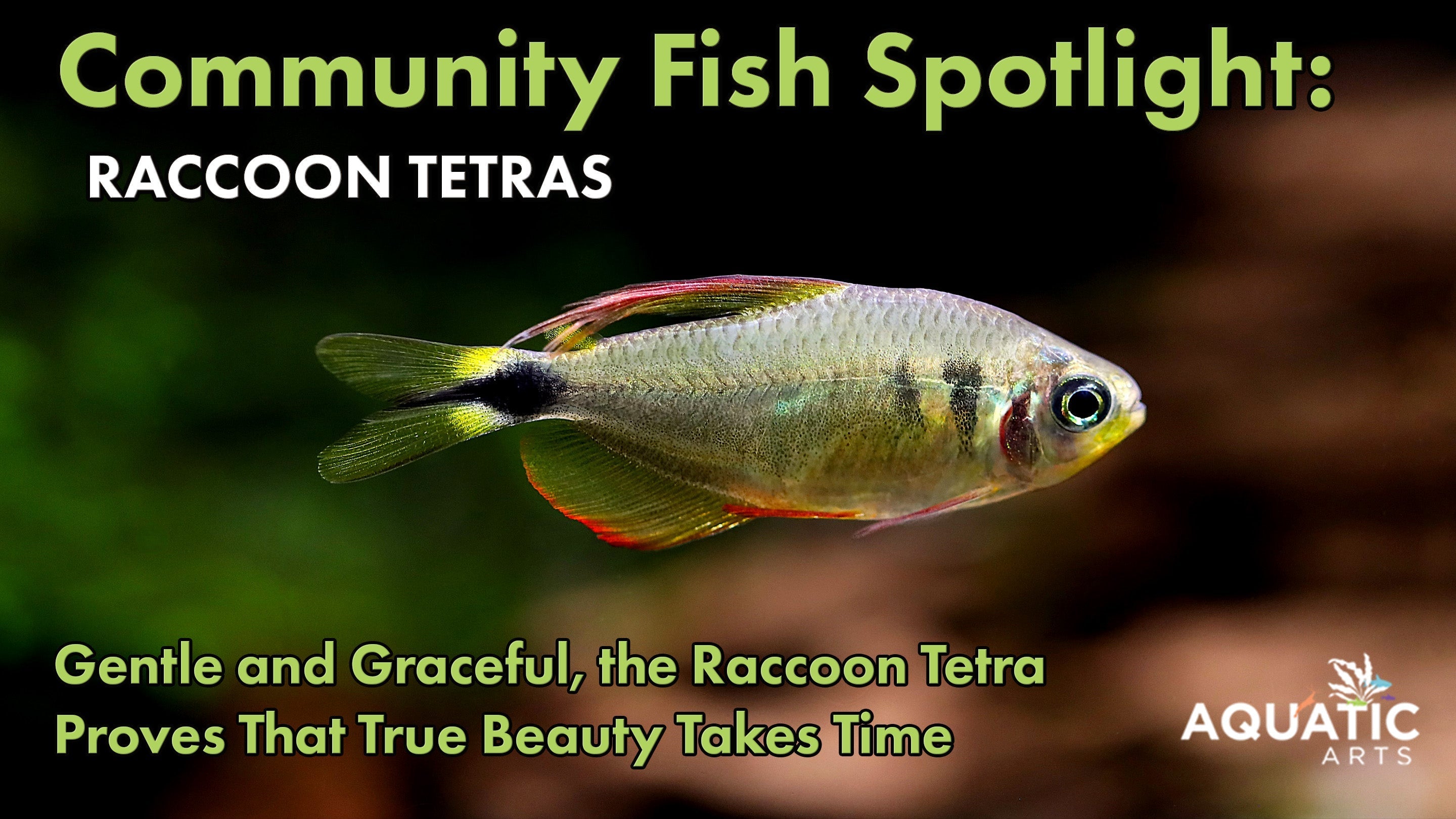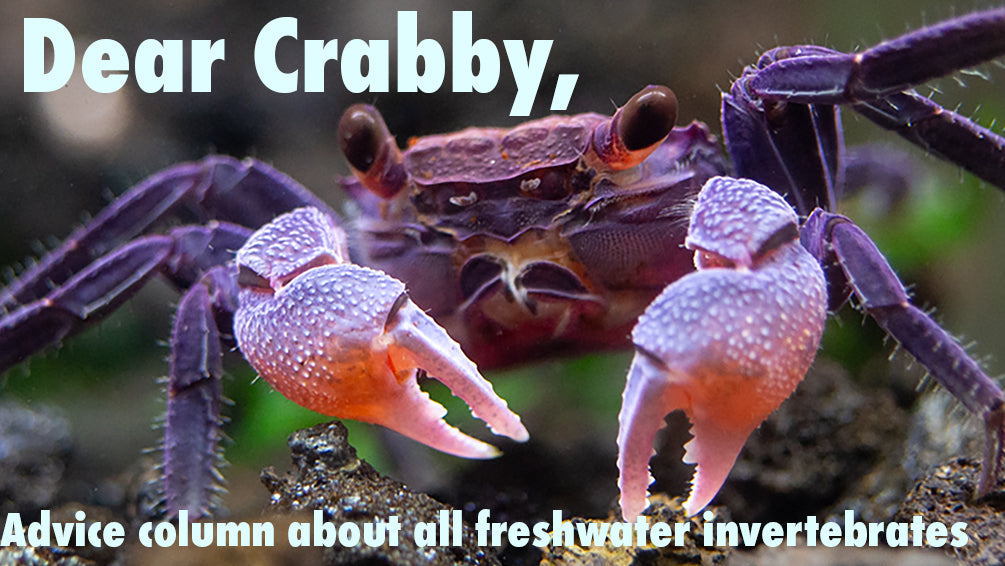Community Fish Spotlight: Pearl Galaxy Medaka Ricefish aka Japanese Ricefish (Oryzias latipes "Pearl Galaxy") - Tank-Bred!

Discover the Celestial Elegance of Pearl Galaxy Medaka Ricefish
Are you looking for a captivating addition to your aquarium community? Look no further than the Pearl Galaxy Medaka Ricefish, also known as the Japanese Ricefish. This stunning species, scientifically named Oryzias latipes "Pearl Galaxy," adds a touch of elegance and charm to any tank setup. What makes them even more appealing is that they are now readily available as tank-bred specimens, ensuring their suitability for home aquariums and reducing the impact on wild populations. Let's dive into the fascinating world of these enchanting fish.

In their native habitats, Pearl Galaxy Medaka Ricefish face predation from various aquatic predators, including larger fish, birds, and amphibians, which has influenced their behavior and natural defense mechanisms.
Meet the Pearl Galaxy Medaka Ricefish
Introducing the Pearl Galaxy Medaka Ricefish, a captivating freshwater species originating from East Asia, notably Japan. Belonging to the family Adrianichthyidae, these ricefish are closely related to other members of their family, yet they stand out due to their remarkable appearance. What truly distinguishes them are their shimmering scales, reminiscent of a celestial array of pearls, thus earning them the moniker "Pearl Galaxy."
In their natural habitat, Pearl Galaxy Medaka Ricefish can be found inhabiting a variety of environments, including slow-moving streams, rice paddies, and marshes. Here, they thrive on a diet consisting of small invertebrates and algae, showcasing their adaptability to diverse ecological niches. This adaptability not only allows them to survive but also to flourish in various aquatic settings, making them an appealing choice for both novice and seasoned aquarists alike.
Their ability to thrive in different conditions makes them well-suited for aquarium life. Whether in a carefully curated planted tank or a more minimalist setup, these Ricefish bring a touch of elegance and charm to any aquatic environment. Additionally, their adaptability extends to water parameters, making them relatively easy to care for compared to more sensitive species.
Overall, the Pearl Galaxy Medaka Ricefish embodies the beauty of nature's diversity and resilience. Their striking appearance, combined with their adaptable nature, makes them a delightful addition to any aquarium community, captivating enthusiasts with their celestial allure and captivating presence.

Diverse Color Variations: While the Pearl Galaxy variety is renowned for its shimmering pearl-like scales, this species also exhibits a range of color variations, including gold, silver, and bronze hues, adding to their allure for aquarium enthusiasts.
Tank Requirements:
When setting up a tank for Pearl Galaxy Medaka Ricefish, it's essential to create an environment that mimics their natural habitat while ensuring their health and well-being. Here's a closer look at the key considerations for their tank setup:
Temperature and Water Parameters: These ricefish thrive in water temperatures ranging from 64°F to 75°F (18°C to 24°C). Maintaining a stable temperature within this range is crucial for their overall health and vitality. Additionally, aim for a pH level in the neutral to slightly alkaline range, ideally around 7.0 to 8.0. Regular monitoring of water parameters and adjustments as needed will help create a stable and comfortable environment for your fish.
Aquascape: Providing ample vegetation is essential for Pearl Galaxy Medaka Ricefish, as it mimics their natural habitat and provides hiding spots and shelter. Incorporate both floating and rooted plants to create a diverse and stimulating environment. Species like Java fern, hornwort, and Amazon sword are excellent choices, as they offer cover and help maintain water quality. Additionally, include open swimming spaces to accommodate their active nature and allow them to explore their surroundings comfortably.
Filtration and Water Quality: Efficient filtration is vital for maintaining optimal water quality in the aquarium. A combination of mechanical, biological, and chemical filtration will help remove waste, debris, and harmful substances, ensuring a clean and healthy environment for your fish. Additionally, performing regular water changes, typically around 10-20% of the tank volume weekly, helps replenish essential nutrients and maintain water parameters within acceptable ranges. Testing water parameters regularly and addressing any issues promptly will help prevent stress and illness in your fish.
By paying attention to these key considerations and providing a well-equipped and thoughtfully designed aquarium, you can create an ideal habitat for Pearl Galaxy Medaka Ricefish. Not only will they thrive in such an environment, but they will also display their natural behaviors and beauty, enriching your aquarium experience.

Sensitivity to Water Quality: Despite their adaptability, Pearl Galaxy Medaka Ricefish are sensitive to fluctuations in water parameters, particularly ammonia and nitrite levels, underscoring the importance of regular maintenance and water testing in their care.
Behavior and Compatibility
Social Behavior: Pearl Galaxy Medaka Ricefish are inherently peaceful and social creatures that exhibit shoaling behavior in the wild. In the aquarium, they thrive in the company of their own kind and feel more secure when kept in groups of six or more. When housed in larger numbers, they display natural behaviors such as shoaling, exploring the tank together, and engaging in occasional displays of courtship. Keeping them in adequate numbers not only enhances their well-being but also reduces stress levels and promotes overall health.
Compatibility: These ricefish are known for their compatibility with a wide range of peaceful community fish species, making them an excellent choice for community aquariums. Their gentle demeanor and non-aggressive nature make them suitable tankmates for various species, including tetras, rasboras, small catfish, and other peaceful freshwater fish. When selecting tankmates for Pearl Galaxy Medaka Ricefish, consider species that share similar water parameter requirements and temperament to ensure compatibility and minimize the risk of aggression or stress.

Social Hierarchy: Within a school of Pearl Galaxy Medaka Ricefish, there is often a social hierarchy established through subtle interactions such as fin displays and body posturing, with dominant individuals typically occupying the center of the group.
Here are some suggestions for compatible tankmates:
- Tetras: Neon tetras, cardinal tetras, and ember tetras are popular choices due to their peaceful nature and vibrant colors.
- Rasboras: Harlequin rasboras, cherry barbs, and galaxy rasboras make excellent companions, adding visual interest to the aquarium.
- Small Catfish: Corydoras catfish species, such as bronze Corydoras or panda Corydoras, are bottom-dwelling fish that coexist peacefully with Pearl Galaxy Medaka Ricefish.
- Shrimp and Snails: Peaceful invertebrates like cherry shrimp and nerite snails can also be added to the tank, contributing to the overall balance and diversity of the ecosystem.
When introducing new tankmates, monitor their interactions closely to ensure compatibility and watch for signs of aggression or stress. Providing ample hiding spots, plants, and visual barriers can help reduce potential conflicts and create a tranquil environment for all inhabitants.
By selecting compatible tankmates and observing proper stocking densities, you can create a thriving community aquarium that showcases the natural beauty and behavior of Pearl Galaxy Medaka Ricefish while promoting a harmonious coexistence among its inhabitants.
Feeding
Pearl Galaxy Medaka Ricefish are omnivorous by nature, meaning they consume both plant and animal matter. In captivity, they readily accept a varied diet, which contributes to their overall health and vitality. To meet their dietary needs, it's essential to provide a balanced and diverse menu.
Offering a combination of high-quality flakes and pellets formulated specifically for small tropical fish is a good starting point. These commercially prepared foods often contain essential nutrients and vitamins necessary for their well-being. Additionally, supplementing their diet with frozen and live foods adds variety and mimics their natural feeding behaviors.
Live foods such as brine shrimp, daphnia, and bloodworms are excellent choices, as they provide protein and stimulate hunting instincts. Watching them actively pursue live prey can be both entertaining and beneficial for their mental stimulation. Frozen alternatives are also readily accepted and offer convenience without compromising nutritional value.
Incorporating vegetables into their diet is another way to ensure a well-rounded nutrition profile. Blanched spinach or zucchini slices can be offered as occasional treats, providing essential vitamins and fiber. These vegetable supplements contribute to a balanced diet and help replicate their natural foraging behavior.
By offering a diverse and nutritious diet consisting of flakes, pellets, frozen, live foods, and vegetable supplements, you can ensure that your Pearl Galaxy Medaka Ricefish receive the essential nutrients they need to thrive and display their vibrant colors and robust health.
Breeding
Breeding Pearl Galaxy Medaka Ricefish in the home aquarium is a rewarding experience and relatively straightforward with the right setup and conditions. Creating a separate breeding tank equipped with fine-leaved plants or spawning mops is essential to encourage spawning behavior and provide a suitable environment for the reproduction process.
Female Pearl Galaxy Medaka Ricefish scatter adhesive eggs among the vegetation, typically attaching them to plant surfaces. Once fertilized by the male, the eggs will hatch in approximately a week under optimal conditions. It's essential to provide adequate hiding spots and cover for the fry to seek refuge from potential predators.
After hatching, the fry can be initially fed with infusoria or powdered fry food until they grow large enough to accept larger prey. Baby brine shrimp is a nutritious option for feeding young ricefish and can be gradually introduced as they develop and mature.
Maintaining stable water parameters, regular monitoring of water quality, and providing appropriate nutrition are essential factors in successful breeding endeavors. With patience and dedication, witnessing the life cycle of Pearl Galaxy Medaka Ricefish from spawning to fry development can be a fulfilling journey for aquarists of all levels.
Seasonal Breeding Patterns: In their natural habitats, these ricefish often exhibit seasonal breeding patterns, with spawning activity peaking during warmer months when environmental conditions are most favorable for egg development and fry survival.
Q&A Section
Q: Why are Ricefish so expensive?
A: The price of Ricefish can vary depending on factors such as rarity, color variation, and breeding difficulty. Some varieties, like the Pearl Galaxy Medaka Ricefish, may be more expensive due to their striking appearance and limited availability in the aquarium trade. Additionally, certain species may require specialized care or breeding techniques, contributing to their higher cost.
Q: How many Ricefish can I keep together?
A: The ideal number of Ricefish to keep together depends on factors such as tank size, species, and individual temperament. In general, it's recommended to keep them in groups of at least six or more to promote natural behavior and reduce stress. However, the exact number may vary based on the specific needs of the species and the size of the aquarium.
Q: What are common diseases that Ricefish get?
A: Ricefish are relatively hardy fish, but they can still be susceptible to common aquarium ailments such as ich (white spot disease), fin rot, and bacterial infections. These diseases can be caused by poor water quality, stress, or inadequate nutrition. Regular water changes, proper diet, and quarantine procedures for new fish can help prevent and mitigate the risk of disease.
Q:How important is leaf litter and natural botanicals to a Ricefish aquarium?
A: Leaf litter and natural botanicals play a vital role in recreating the natural habitat of Ricefish and providing essential hiding spots and breeding areas. They also contribute to water chemistry by releasing beneficial compounds and tannins, which can help create soft, acidic conditions preferred by some species. Additionally, leaf litter and botanicals serve as a food source for microorganisms and contribute to overall aquarium biodiversity.
Q: Can I keep Ricefish outdoors in a pond or a water garden?
A: Yes, many Ricefish species can thrive in outdoor ponds or water gardens, provided that the climate is suitable and water parameters are adequately maintained. Outdoor setups can mimic their natural habitat more closely and allow for larger populations and natural breeding behavior. However, it's essential to research specific species' temperature requirements and predator risks in your area before setting up an outdoor habitat.
Q: Why do Ricefish have such a short lifespan?
A: The lifespan of Ricefish can vary depending on factors such as species, genetics, and environmental conditions. In general, Ricefish tend to have relatively short lifespans compared to some other fish species, typically ranging from one to three years. This shorter lifespan is influenced by factors such as rapid growth rates, predation pressure in the wild, and potential genetic predispositions. Providing optimal care and a suitable environment can help maximize their lifespan in captivity.
Q: What are the top 3 reasons why a Ricefish might die in an aquarium?
A: Poor Water Quality: Maintaining proper water parameters such as temperature, pH level, ammonia, nitrite, and nitrate levels is crucial for the health and well-being of ricefish. Poor water quality can stress the fish, weaken their immune system, and make them more susceptible to diseases and other health issues.
Overcrowding: Keeping too many ricefish in a small aquarium can lead to overcrowding, which can result in competition for resources such as food and oxygen. Overcrowding can also increase stress levels and aggression among fish, leading to health problems and a higher risk of disease transmission.
Inadequate Diet: Providing a balanced and nutritious diet is essential for the health and vitality of ricefish. A diet lacking in essential nutrients or over-reliance on low-quality foods can result in malnutrition, weakened immune system, and overall poor health. It's important to offer a variety of foods, including high-quality flakes, pellets, frozen, and live foods, to meet their dietary needs.
The Pearl Galaxy Medaka Ricefish, with its celestial beauty and captivating presence, has undoubtedly earned its place as a prized addition to any aquarium community. From their striking appearance to their peaceful demeanor, these fish continue to enchant hobbyists worldwide. Whether you're a beginner or an experienced aquarist, creating a thriving aquatic environment for these magnificent creatures is a rewarding endeavor. If you're interested in exploring the diverse world of ricefish and adding them to your aquarium collection, visit our website to discover the wide range of varieties and supplies that Aquatic Arts has to offer. With our extensive selection and expert guidance, you can embark on an exciting journey of discovery and create a stunning aquatic showcase in your own home.




